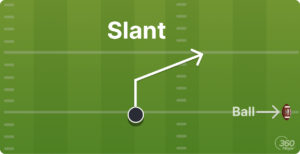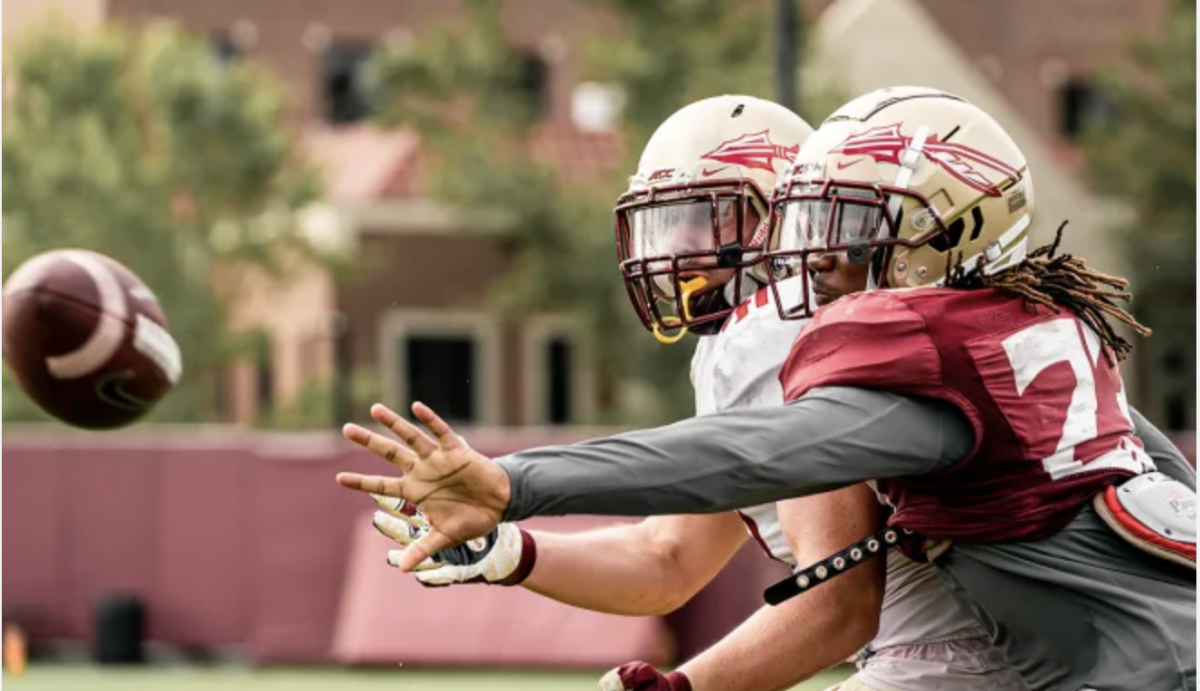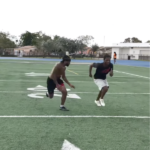How to Defend the Slant Pattern: A Guide for Defensive Backs
The slant pattern stands as one of the most efficient and effective routes a wide receiver can run. However, for defensive backs, defending the slant requires a combination of skill, anticipation, and technique. In this article, we’ll explore the strategies and techniques that can help defensive backs excel in defending the slant pattern, neutralizing this potentially game-changing play.
The slant pattern is a quick and direct route where the wide receiver angles across the field, cutting diagonally towards the middle. It’s designed to create separation from the defender and exploit the space between zones in the defense. The goal is to catch the ball in stride and gain yards after the catch, making it a dangerous weapon in the offensive arsenal. Let’s take a look at six key elements to defending the deadly slant pattern.

1. Anticipation and Film Study
Great defenders are often made in the film room. By studying the opponent’s tendencies, formations, and the receiver’s alignment, a defensive back can gain insights into the likelihood of a slant route. Anticipating the route and recognizing the cues can give the defender a split-second advantage in reacting to the play. Getting a good bead on the wide receivers behavior off of the line can also give you cues that will allow you to anticipate the route coming. Since many defenses are designed to take away the fade / go route, anticipation to defend the slant is a must. Studying film along with recognizing what you have studied when in game situations will be key in defending the route.
2. Positioning and Alignment
Proper pre-snap alignment is crucial. Defensive backs should position themselves with an inside shade on the receiver, making it more challenging for the receiver to execute the slant. Being positioned slightly to the inside allows the defender to take away the preferred route while giving themselves the opportunity to use the sideline as an extra defender. Slant routes need space to be successful. This means that it is one of those routes where a particular split needs to be taken for it to be executed effectively. A lot of offenses offset this by taking a similar split to also run a go route so that you can not lean heavily on the slant alignment. Despite this fact, using proper divider rules, defensive backs can help themselves by using the proper alignment to deter the slant while using good technique to protect against the go route.
3. Physical Jam at Line
Press coverage is a powerful weapon against the slant pattern. Defensive backs can disrupt the timing by jamming the receiver at the line of scrimmage. This initial physical contact can throw off the timing of the route and create hesitation, allowing the defender to regain leverage. While it may be possible to mirror the slant and stop it from being completed, physicality remains your best weapon against it. This is why you can not live on one press technique alone. Even if your preference is soft press or a mirror technique, you still need to be proficient in playing some hard press. Furthermore, once you get in the red zone, you can get taken advantage of by slants if you don’t have the ability to get jams and be physical.
Definitely a hard press example. Vintage Brandon Browner pic.twitter.com/aOgqkKrHoi
— DB Tips (@dbtips101) October 17, 2023
4. Maintaining Hip-to-Hip Positioning
Once the receiver releases off the line, the defensive back must maintain hip-to-hip positioning. This means running in parallel with the receiver, denying any inside leverage and minimizing the separation. Keeping the hips aligned allows the defender to react quickly to the receiver’s cuts. Since the slant is a part of the quick game for offenses you don’t have a lot of time to close the gap. Before you know it, the ball will be coming and you need to be able to defend any part of the receiver’s body. The only real way to break up the pass or possibly intercept it will be getting hip to hip positioning. This will allow your arm to reach across his body to get a hand on the ball once it arrives.
5. Reading the Receiver’s Eyes and Hips
As the receiver breaks for the slant, the defensive back should focus on the receiver’s eyes and hips. These indicators can provide clues about the timing and direction of the route. By reading the receiver’s body language, the defender can anticipate the cut and make a play on the ball. It is crucial not to let your eyes drift up or look inside at the quarterback too soon. It is important to see the angle of the wide receiver’s hips. Is he trying to stem you inside to run a deeper route or are his hips moving on a slant route angle. Keying the hips will allow you to take the proper angle to the receiver to defend the route. If you eyes drift up too fast, you could end up allowing too much separation on the receiver going inside thus allowing an easy completion.
6. Quick Reaction and Ball Disruption
Timing is crucial when defending the slant. Defensive backs need to react quickly to the receiver’s break, while also timing their own move to disrupt the play. As the receiver’s hands go up to catch the ball, the defender can use their own hands to knock the ball away or make a well-timed tackle to prevent yards after the catch. If you are able to gain the hip to hip positioning that is crucial then getting your hands across to the ball will be easy. However, sometimes we are not quite there as the ball arrives. Depending on your positioning, a quick tug on the elbow of the upfield or downfield arm of the receiver could disrupt his ability to catch the ball. Beware though, leaving your hand on the elbow for any extended period of time will draw a flag from the officials. Timing is key when attempting the maneuver and should only be used when you have fallen behind on the receiver as he moves inside.
Defending the slant pattern is an art that requires a blend of football IQ, physical prowess, and technique. By mastering the strategies of anticipation, proper positioning, physicality, and quick reactions, you can effectively neutralize one of the most annoying routes in football. Just as wide receivers perfect the slant pattern, defensive backs must perfect their craft in defending it—balancing instinct, preparation, and technique to ensure success on the gridiron.
Chad Wilson is the owner of All Eyes DB Camp and author of "101 DB Tips". He played college football at the University of Miami and briefly in the NFL for the Seattle Seahawks. Over his 15 year high school football coaching career, he tutored over a dozen Division I defensive backs and as a trainer has worked with NFL All Pros, first round draft picks, college football All Americans and Top 10 ranked high school football prospects.









